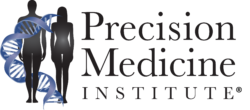“This is a true precision medicine approach toward the disease,” said the study’s lead author

Precision medicine research continues to enable healthcare leaders to offer new treatments for difficult-to-treat diseases. One recent example comes from researchers at Johns Hopkins Medicine where a new understanding of amyotrophic lateral sclerosis (ALS)—also called Lou Gehrig’s disease—could offer a potential treatment window for this currently incurable and debilitating neurodegenerative disease.
ALS is a motor neuron disease which slowly destroys the neurons that control movement. Despite extensive research, there are no effective cures for ALS. The disease results in death for every patient who develops it on average within two to five years of onset of symptoms.
But researchers at Johns Hopkins Medicine believe they have found a path for potential treatment. They discovered abnormalities in a class of neurological cells called astrocytes that contribute to the development of ALS and which could be treatable during a specific period of time of the disease’s progression, according to a Johns Hopkins press release.
Astrocytes are star-shaped nerve cells in the brain that play an important role in regulating brain activity and health. These cells are thought to release transmitters. The Johns Hopkins researchers observed that in patients with ALS, astrocytes with an altered channel protein in the cells release toxins that affect the neurologic cells responsible for movement.
The Johns Hopkins researchers published their findings in the journal Proceedings of the National Academy of Sciences (PNAS), titled, “Cx43 Hemichannels Contribute to Astrocyte-Mediated Toxicity in Sporadic and Familial ALS.”
Precision Medicine Approach to ALS Research Worldwide
Ultimately, this new discovery has already resulted in a potential treatment using a drug called tonabersat, a CSD inhibitor originally developed for migraines and epilepsy. However, precision medicine treatments focused on blocking affected astrocytes may only work on a subsegment of patients with ALS and would need to be given within a particular window in time during the disease.
“We think this is particularly important because the astrocyte dysfunction is active after symptom onset in patients with ALS,” said neurologist Nicholas Maragakis, MD, senior author of the study, in the Johns Hopkins press release. “This finding may enable us to target abnormalities in astrocytes for ALS treatment.”
Maragakis is a professor of neurology at the Johns Hopkins University School of Medicine, Director of the ALS Center for Cell Therapy and Regeneration Research at Johns Hopkins, and co-director of the Johns Hopkins’ ALS clinical trials unit.
Other researchers also have seen precision medicine as a potential answer to the complexities of ALS research.
Two ALS Studies of Note
The Irish government recently used an $11 million grant to establish an AI-based precision medicine framework designed to accelerate precision medicine research for ALS patients.
And, in another recent precision medicine breakthrough in ALS research, a single-patient clinical trial conducted by researchers at UMass Chan Medical School that was published in Nature Medicine in late 2021 showed that, for the one patient trialed, blocking a gene connected with ALS stopped progression of the disease for more than one year.
We covered this study in a previous ebrief, titled, “UMass Medical School Pilot Study Shows Modified Nucleotide Therapy Can Suppress Gene That Causes Lou Gehrig’s Disease.”
As applications of precision medicine research become more clinically accessible, healthcare leaders should be aware of opportunities to offer new treatments for patients with incurable diseases such as ALS, as well as curable diseases and other medical conditions. These advances offer the ability to attract new patients and to improve the care that healthcare organizations provide.
—Caleb Williams
Related Information:
Johns Hopkins Researchers Identify a Potential Window for Treating ALS
Cx43 Hemichannels Contribute to Astrocyte-Mediated Toxicity in Sporadic and Familial ALS
€10m Irish Project to Focus on Treating ALS with Data Science and AI
Suppression of Mutant C9orf72 Expression by a Potent Mixed Backbone Antisense Oligonucleotide
